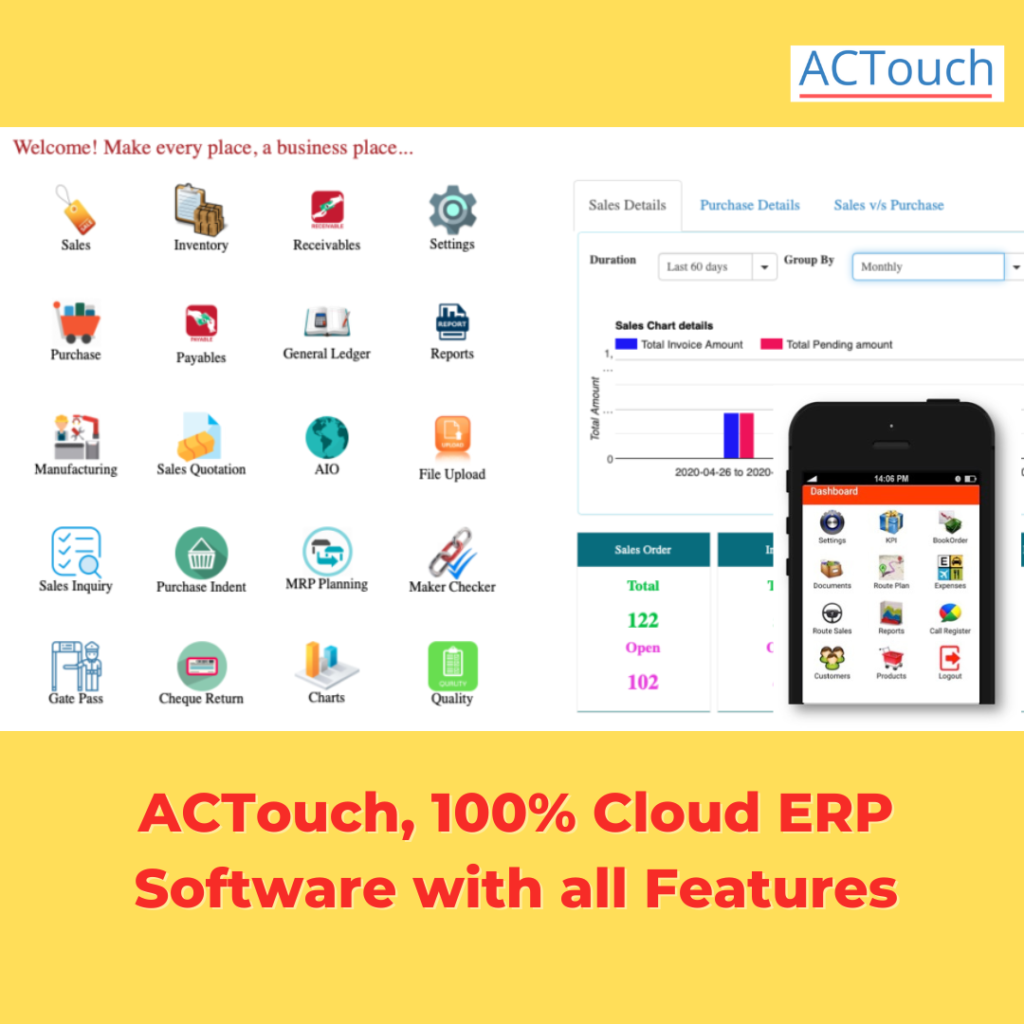ERP ROI Calculator
Many businesses started asking a simple question to their Project or Production team whenever they ask for new Software or ERP Software is, “What is the ROI (Return on Investment) on this? How much we can save? Can you come with cost calculations?”
A CFO / Financial controllers will do Financial models to arrive at “Internal Rate of Returns (IRR)” / “Return on the investment” calculations before doing any new / large investments. This is because businesses know “cost of money” and what’s minimum returns they expect from this investment over a period of time. One of the model is “Return on Investment (ROI)” and other being “Internal Rate of Returns (IRR)”. There are few more, but lets focus on the ROI now.
Few businesses are moving away from treating an ERP investment as “Cost of doing a Business” to see what would be the “ERP Return on Investment” (ERP ROI) by taking that cost justification now.
When a Project team is hit with a question on “Return on the Investment” (ERP ROI Costs) or “Project cost justifications”, they start to collect few data on an ERP Software installation and implementation. As part of ERP implementation, many business begin with the “Cost Impact and how much money needed” to maintain or move to a new ERP. This is a common practice as everyone is worried about the ERP migration and costs associated to that.
What they miss is the Return On the investment based on these expenditures.
Many companies before they decide to go for ERP Software / a major migration, they begin with a Cost justification of an ERP with cost of license, Implementation costs, what’s the costs to maintain an ERP for the next 8 to 10 years. This total cost will give an idea on the ERP TCO (Total cost of ownership) and what to do?
There are 2 ways
- Tangible benefits
- Non tangible benefits
2 Types of installation will help to reduce the costs
- On-premise
- SaaS model deployments
It’s known that an ERP implementation in a company helps to reduce the non-productive works, increase productivity and improve the operation efficiency. However many see only the “Costs” as part of the investment and don’t see what’s the Return on the investment (ROI) and how it would benefit.
Few companies decide to buy or go for a SaaS model based on the few cost factors that are available to them like License costs, implementation costs, Hardware costs, Customization, if any and other surrounding software costs. What they miss is the ROI and how to see the benefits.
How much Money you can save, if you are moving from the existing ERP?
Here we are trying to give details of the factors that would give the direct and Indirect benefits.
- Software Licenses and AMC costs – Annual
- Legacy ERP maintenance costs including salary and perks to IT teams.
- Yearly / Bi-annual Upgrade of Hardware, Network, PCs etc.
- Supporting software costs like MS Office, Anti Virus etc.
- Loss of revenues due to missing product features and delays in deploying new functionality.
How an ERP Cost calculator helps to improve Return on Investment (ROI)?
It is essential to consider the total value proposition with Savings in Money and Time. To have a single factor, we should convert the TIME SAVINGS into MONEY Component.
Factors that could be difficult to convert into MONEY Based are as below,
- Time Saving to generate an Inventory reports, Invoice etc.
- Improved Employees and Customer satisfactions, where the information comes without any error or difficultly. What we say “Information on Finger Tips”
- Increased Billable hours or same person can do more work in the same hours.
- Reduction of overall operating expenses based on increased productivity and business.
- Ability to take a quick and reliable decision based on the accurate data
- Improved team retention and happiness index.
Migrate to 100% Cloud ERP Software Now and enjoy the FREEDOM | ||
 | Talk to us to know more about ACTouch Cloud ERP Software NOW  |